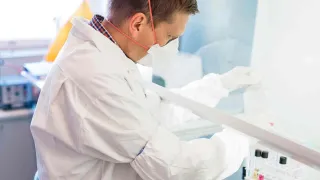Project
Hazard characterization of graphene-based nanomaterials in energy production and storage (GrapHazard)
The use of graphene-based materials is increasing. We identify the health risks associated with them using testing methods developed specifically for this purpose.

Objectives
- Product development related to energy production and storage has increased with the growth in demand for green technologies. Due to their unique electrochemical properties, graphene-based materials are promising solutions for batteries, supercapacitors and solar cells.
- The increasing use of graphene materials requires a thorough assessment of their health effects.
- The aim of the project is to identify the health risks associated with graphene-based materials using in vitro testing methods based on cell cultures developed specifically for this purpose.
Data and methods
In the GrapHazard project:
- Toxicity testing methods are modified for the study of the toxic effects of respiratory exposure to graphene-based materials. The work follows the recommendations of the OECD's MNWP (Manufactured Nanomaterials Working Party) on uniform working practices. The results are compared with the biomonitoring data collected in the EU Graphene Flagship initiative from employees exposed to graphene materials.
- Which mechanisms of action are associated with the toxic effects of graphene materials in the context of lung exposure is examined. The project uses in vitro methods that allow the direct genotoxic effect to be distinguished from inflammatory secondary effects.
- The physicochemical properties of graphene-based materials related to the harmful effects of respiratory exposure are investigated. The project examines the effects of graphene-based materials with different properties on target cells. Knowledge of material properties affecting toxicity promotes the selection of safe materials in energy production and storage (Safe by Design strategy).
Our experts
Project partners
University of Trieste, Italy
Funding
SAF€RA and The Finnish Work Environment Fund
Downloadable materials
